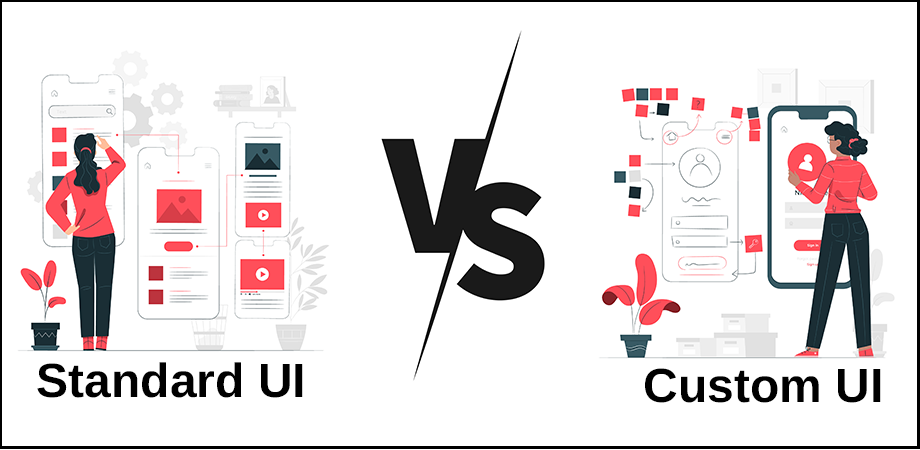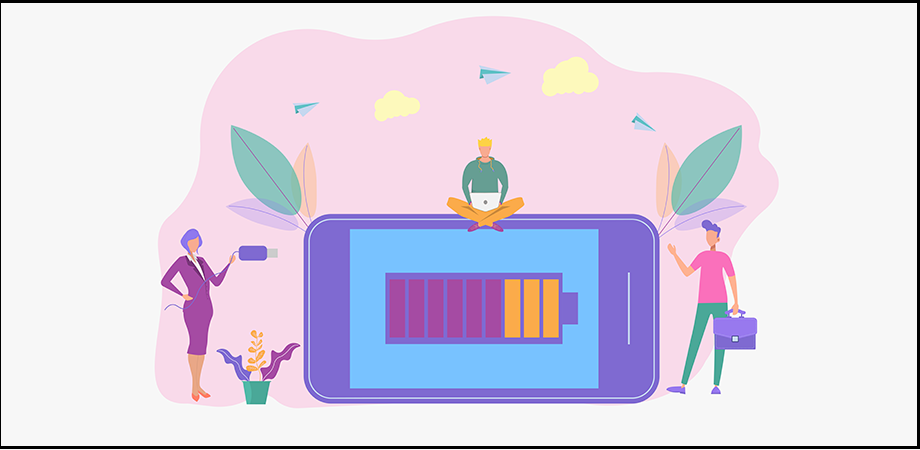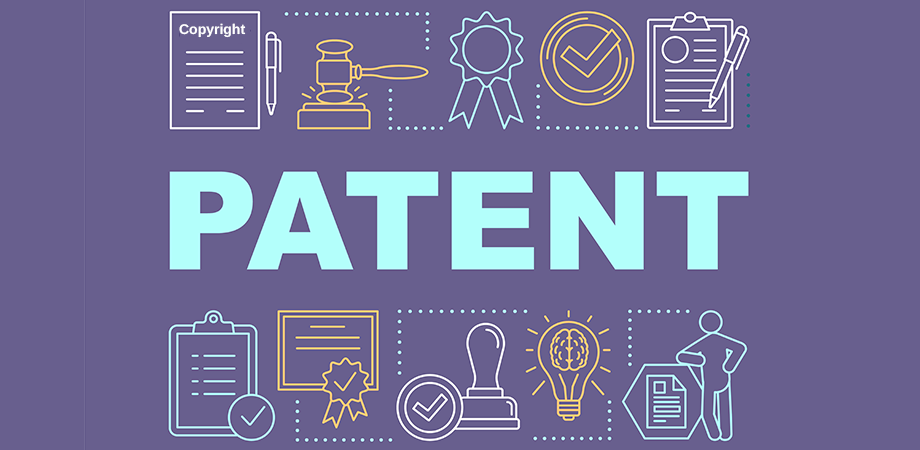Navigating the realm of Android application development is a complex task laden with various challenges. Given the diversity of the Android ecosystem, developers are often confronted with obstacles including the fragmentation of devices and Android OS versions, maintaining optimal performance and security, ensuring superior user experience, and more. These challenges, while formidable, are manageable. This comprehensive review will delve into some of the most pressing challenges in Android app development and discuss effective strategies to mitigate them.
Whether you’re a beginner dipping your toes in app development or an experienced professional, this article will offer valuable insights to help you manage and overcome these hurdles. We aim to provide solutions that streamline the development process, improve application quality, and lead to the creation of successful Android applications.
What are the Top Challenges in Android App Development and Their Solutions?
As we delve into the world of Android app development, it’s crucial to comprehend the many real challenges that can surface during the process. While these obstacles might seem daunting, they are part and parcel of the journey toward creating a successful app. This section will explore the top Android app development challenges, shedding light on their intricate nature. From tackling device fragmentation to ensuring robust app security, we will discuss these complexities in detail. But fear not, alongside each common challenge, we will also present practical solutions to help you navigate these issues effectively.
1. Fragmentation
In the world of Android app development, one of the major challenges is something we call “fragmentation”. Now, imagine you’re an artist who’s been asked to paint a portrait, but instead of painting just one picture, you have to create a hundred different versions of the same picture, each one fitting into a different size and style of frame. Sounds overwhelming, right? That’s exactly how an app developer feels about fragmentation.
You see, Android phones come in all shapes and sizes – from small-budget models to the largest high-end mobile devices. Plus, there are countless versions of the Android operating system still in use. This means that when developers build an app, they’re not just creating it for one kind of device or one version of the system, but for a whole range of them. And, they have to make sure the app looks good and works well on all of them. This is what we call fragmentation, and it’s a bit like trying to juggle a hundred balls at once!
How can Developers Solve This Problem?
Well, it’s not easy, but there are a few strategies that can help.
a. Responsive Design
Making Responsive Design is a clever way of designing apps so they automatically adjust to fit different screen sizes. It’s a bit like having a magical painting that can change its size to fit any frame!
b. Use Android’s Own Testing Tools
Android’s Testing Tools let them see what their app will look like on different devices and versions of the system before they even release it. It’s like being able to preview those hundred different paintings before you exhibit them.
c. Prioritize Most Popular Devices and Android Versions
This means focusing on making the app work best on the devices and versions that most people are using. It’s a smart way to make sure your app reaches as many people as possible and gives them a great experience.
So, while fragmentation is a tough challenge, it’s not an impossible one. With a little creativity, some smart tools, and a focus on the user, developers can overcome it and create Android apps that shine on any device.
2. Which One to Use Standard UI or Custom UI
Let’s think about a birthday party. The host has two options: they can either buy a pre-made, standard cake from the store, or they can bake and decorate their own custom cake. The store-bought cake is familiar; everyone knows what it will taste like and it’s a safe choice. But a custom cake, while requiring more effort, can be made to look and taste exactly how the host wants. This same dilemma is faced by Android app developers when they have to choose between using Standard UI (User Interface) or a Custom UI.
a. Standard UI
Imagine an app as a party and the UI as the cake. The UI is what users see and interact with, like buttons, menus, and screens. A Standard UI uses elements provided by Android itself. It’s like the store-bought cake – consistent and reliable. Users are familiar with it, so they know how to use it without thinking too much. Plus, it saves the developer a lot of time because they don’t have to design and build these elements from scratch.
b. Custom UI
On the other hand, a Custom UI is designed and built by the developers themselves. It’s like the custom cake – it can be tailored to be unique, and stylish, and to serve specific needs. This can make the app stand out from others and provide a unique experience to mobile users. But, it also means more work for the developers, and if it’s not done well, it can confuse users who are used to standard elements.
How Do Developers Decide?
It’s a bit like choosing the right cake for the party. They need to think about who will be using the app, what those users prefer, and what the app needs to do. Sometimes, a Standard UI is the best choice, if consistency and familiarity are important. Other times, a Custom UI can offer unique features and style that will make the app stand out.
In the end, a great app, like a great party, is all about balancing the needs and expectations of the users (or guests), with the capabilities and goals of the developers (or hosts). The choice between a Standard UI and Custom UI isn’t always an easy one, but with careful thought and planning, developers can make the decision that’s best for their app.
3. API Incompatibility
Let’s think about a group of friends who want to play a game together. But they’re all speaking different languages. If they can’t understand each other, it’ll be really tough to play the game, right? In the world of Android app development, a similar situation can occur, and it’s known as API Incompatibility.
API stands for Application Programming Interface. It’s kind of like a translator between different software applications. When building an app, developers often use APIs to “borrow” features from other apps or services. For example, a weather app might use an API to get weather data from a big weather database.
The problem arises when the API and the app don’t speak the same “language”, or when they’re not compatible. This is like trying to play a game with friends who don’t understand what you’re saying. The result? The app can’t use the features it needs from the other service, and this could cause it to malfunction or even crash.
Ways to Solve This Problem
This challenge can make app developers feel a bit like they’re stuck in a game of telephone with bad connections. But don’t worry, there are ways to solve this problem.
a. Test the Compatibility of API
Firstly, developers can always make sure to test the compatibility of the API with their app before they start building. It’s like making sure all the friends speak the same language before they start playing the game.
b. Use Version Control Strategies
Using Version Control Strategies means that if a new version of the API comes out and is not compatible with their app, they can still use the older version that works.
c. Wrap API Calls with Own Code
Lastly, developers can wrap the API calls with their own code. This is like having a skilled translator who can quickly interpret what’s being said, even if the language changes a bit.
So, even though API Incompatibility can be a big challenge in Android app development, it’s not a game-stopper. With careful planning, testing, and some smart strategies, developers can ensure that their apps and APIs work together smoothly. In the end, they can keep the game going and create an app that works well and meets the needs of their users.
4. Security Issues
Imagine you have a secret diary where you write all your personal thoughts and feelings. You wouldn’t want anyone else to read it, right? That’s why you might use a lock and key to keep it safe. In the world of Android app development, developers have to think about similar concerns when it comes to security issues.
When you use an app on your phone, you often share private information like your name, email, or even credit card details for online purchases. Like your secret diary, this information needs to be kept safe and secure. But sometimes, there are people out there, often called hackers, who are really good at picking locks. They try to find ways to break into apps and steal this information.
This is a big challenge for developers, as they need to create strong “locks” for their apps to keep hackers out. This is like making sure your diary has a lock that no one else can open.
Strategies for Ensuring App Security
Well, there are several solutions developers can use.
a. Strong Encryption: Protecting Data Like a Secret Code
Firstly, they can use strong encryption, which is a bit like a secret code. It jumbles up the information so that even if a hacker manages to get it, they won’t be able to understand it. It’s like writing your diary in a secret language that only you understand.
b. Secure Coding Practices: Building a High-Quality Lock
Secondly, they can use secure coding practices. This is like using a really strong, high-quality lock on your diary. It makes it harder for hackers to break in.
c. Regular Testing and Updates: Maintaining a Reliable Lock
Finally, they can regularly test and update the app’s security. This is like regularly checking your diary’s lock to make sure it’s still working well and replacing it if it gets old or rusty.
Security issues can be a bit scary, both for developers and for users who trust them with their information. But with these strategies, developers can work to create apps that are as safe as a well-locked diary. This way, users can enjoy using the app without having to worry about their personal information.
5. Which technology to use JAVA or KOTLIN
Let’s imagine that you’re planning to bake a cake. You have two recipes in front of you – one is traditional and has been used for years, and the other is new and trendy, promising a quicker, easier bake with the same delicious result. You’re caught in a dilemma about which one to choose. In the world of Android app development, developers often face a similar situation when deciding between two technologies – Java and Kotlin.
JAVA
Java is like the traditional recipe. It’s been around for a long time and developers know it inside out. It’s reliable, powerful, and has a huge community of developers who can help out when problems arise. But just like any old recipe, it can be a bit complicated and time-consuming to work with.
KOTLIN
On the other hand, Kotlin is like the new, trendy recipe. It’s more modern and designed specifically with Android app development in mind. It promises to make the app development process easier and quicker, with less code and fewer chances for errors. However, because it’s relatively new, not everyone is familiar with it, and the community of developers is smaller.
How Does a Developer Decide Between Java and Kotlin?
It’s like choosing the best recipe for your cake. You’d need to think about what you’re comfortable with, what you want to achieve, and the resources you have at your disposal.
- If a developer is already very comfortable with Java and is working on a complex app where they might need a lot of support, sticking with Java might be the best choice. It’s like sticking with the traditional cake recipe that you’ve used many times before
- But if the developer is open to learning new things and wants to simplify their development process, trying out Kotlin might be a great option. It’s like giving the new, trendy cake recipe a shot to see if it really does make baking easier and quicker.
Remember, there’s no definitive ‘right’ or ‘wrong’ choice here – it’s about choosing the right tool for the job, just like choosing the right recipe for the cake you want to bake. Both Java and Kotlin have their own strengths and can help developers create amazing Android apps.
6. Storage and Battery Capacity Challenge
Think of your favorite backpack. It can hold your books, your lunch, and maybe even your laptop, but there’s a limit to how much it can carry, right? If you try to stuff in too much, the zipper might break, or it could become too heavy to carry. Similarly, your phone is like a digital backpack. It can store many apps, photos, and songs, but there’s a limit to how much it can handle. This is where developers face the challenge of storage capacity when creating Android apps.
Now, imagine you’re on a long hike with that backpack. You’ve packed some food and water, but you need to be careful to ration your supplies to last the entire journey. Similarly, your phone battery needs to last the whole day, and running lots of heavy apps can drain it quickly, just like consuming all your food and water early into your hike.
So How do Android app developers Tackle These Toughest Challenges?
a. Keeping Apps Lightweight
When it comes to storage, they can aim to keep their apps as lightweight as possible. This means packing only the essentials into the app, just like you’d only pack what you really need in your backpack. They can also use cloud-based services, where the data is stored on the internet, not on your phone. It’s like keeping some of your stuff at a friend’s house instead of carrying it all in your backpack.
b. Create Energy-Efficient Apps
When it comes to battery life, developers can create apps that are energy-efficient. This means the app uses as little battery power as possible, similar to how you might use your food and water sparingly on your hike. They can also ensure their app doesn’t run in the background when it’s not being used, which would otherwise consume more battery, much like leaving a light on when you’re not in the room.
These challenges might make a developer’s journey a bit tough, just like a heavy backpack or limited supplies might make a hike challenging. But with smart planning and efficient practices, they can create apps that are light on storage and easy on the battery, ensuring a smooth ride in the world of Android app development projects.
7. Visibility issues in the Play Store
Let’s imagine you’re at a massive music festival with dozens of bands playing on different stages. You and your band are super excited to perform, but the problem is, you’re just one among many. How do you make sure people come to see your performance and not someone else’s? Similarly, in the vast world of the Google Play Store, where there are millions of apps, developers face the challenge of making their apps stand out. This is what we call visibility issues.
Imagine if your app was a band at this music festival. You’ve practiced your songs (developed a fantastic app), and you’re ready to perform (launch your app), but how do you make sure people know about you? You need to attract an audience (users) amidst so many other bands (apps).
Now, What Could Be the Solutions?
a. App Store Optimization
Just as a band might create interesting posters or give sneak previews of their music to attract the audience, developers can use app store optimization. This includes having a catchy app title and a detailed description with relevant keywords, so when users search for an app, yours has a better chance of showing up in the results.
b. Collecting and Showcasing Positive Reviews
Another way could be by collecting and showcasing positive reviews, like how bands might display testimonials from fans. If users see that other people have had a good experience with the app, they might be more likely to download it.
c. Promote App Outside Play Store
And just like bands might share their performance schedule on social media, developers can promote their app outside the Play Store as well, on social media, blogs, or other online platforms.
d. Unique App to Solve User’s Problems
Finally, remember how bands might offer a unique style or a thrilling performance to stand out? In the same way, having a unique and valuable app that solves a user’s problem can increase visibility because users are more likely to share and recommend an app they find useful.
So even though the Play Store can feel like a massive music festival with countless bands, with the right strategies, developers can improve their app’s visibility and attract a crowd of users to their app’s “performance”.
8. Patent and Copyright Issues
Imagine you’ve written a catchy tune that you’re incredibly proud of. One day, you hear the same melody playing on the radio, but it’s not your song. Someone else has used your tune without giving you any credit. That wouldn’t feel good, right? This kind of situation can happen in the world of app development companies too, and it’s known as a patent or copyright issue.
When developers create an app, they’re also creating something unique, just like your catchy tune. This could be an innovative way of doing something or a particular design guideline or feature. But what if another developer takes that unique thing and uses it in their app without permission? That’s a violation of patent and copyright rules.
Just like in music, where copyright laws help protect your original tune, there are laws in the technology world that help protect the unique aspects of an app. These laws mean that if someone else wants to use that part of the app, they usually need to get permission and sometimes pay a fee.
How Do Developers Handle These Challenges?
a. Understanding Patent and Copyright Laws
One important step is to make sure they have a good understanding of patent and copyright laws. This is like knowing your rights as a songwriter. They need to be aware of what aspects of their app can be protected and how to go about doing that.
b. Conducting Due Diligence: Avoiding Unintentional Infringement
Developers also need to be careful not to unintentionally use someone else’s patented or copyrighted material. This could be avoided by conducting a thorough check or “due diligence” before developing certain aspects of their app. It’s a bit like making sure the tune you’ve written hasn’t already been used by another songwriter.
c. Protecting App Innovations: Considerations for Obtaining a Patent
And finally, if developers do come up with something truly unique and valuable, they might consider obtaining a patent. This is a bit like registering your song officially as yours, giving you the right to prevent others from using it without your permission.
Just as in the world of music, respecting others’ work and protecting your own are crucial parts of being a successful and ethical participant in the world of Android app development.
9. Scalability
Imagine you’re hosting a party for your 15 closest friends in your small living room. You’ve arranged seating, snacks, and games for this number of guests. But what if your friends each bring a guest of their own? Now you have 30 people, and your small living room doesn’t seem big enough. This is a lot like the challenge of scalability in Android app development.
Scalability is all about how well an app can handle growth. When developers first create an app, they might have a small group of users in mind, just like your party plans for 15 friends. But what if the app becomes super popular, and suddenly it has thousands or even millions of users? That’s like having a party that suddenly needs to accommodate 30 people…or 300!
If the app isn’t prepared to handle this growth, it might start having issues. It might become slow or crash entirely. This would be like your party guests not having a place to sit, or running out of snacks – not a fun experience!
How do Developers Make Sure Their App is Scalable?
a. Planning for Success: Designing Apps with Scalability in Mind
Well, one way is to plan for growth from the very beginning. Even if they’re starting small, developers can design their app in a way that allows it to easily expand. This is like planning your party for 15 friends but having a backup plan to accommodate more guests if needed.
b. Embracing Cloud Services: Flexible Scaling for App Performance
Developers can also use cloud services that can easily be scaled up or down depending on the need. This means if the app becomes popular and gets more users, they can add more resources to handle the extra load, and reduce when they’re not needed. It’s like renting extra chairs and ordering more snacks if more guests arrive at your party.
In short, developers must think of scalability right from the start. It’s all about being ready to handle success – because who wouldn’t want their party to be the most popular one in town? Similarly, having a popular app with thousands of users is a dream for most developers, and with proper scalability measures, it doesn’t have to turn into a nightmare.
Conclusion :
Developing an Android app isn’t simply about bringing an idea to life. It’s about navigating through a jungle of challenges – from the technical aspects of fragmentation, API incompatibility, and choosing the right development language, to user experience concerns like storage and battery life, to the more complex issues like ensuring security, standing out in the crowded Play Store, and dealing with patent and copyright issues. And let’s not forget the exciting but daunting possibility of scaling up when the app becomes popular!
But these challenges aren’t roadblocks; rather, they’re stepping stones that lead to better, more robust apps. They encourage developers to learn and grow, innovate, and find solutions. And that’s what makes the world of Android app development so thrilling and rewarding.
In the end, every challenge faced in Android app development can be seen as an opportunity to push the boundaries of what’s possible, to create apps that are not only useful and engaging but also reliable, efficient, and respectful of users and their devices. And that’s an adventure worth embarking upon.
Embarking on your Android app development journey and facing some hurdles? Don’t worry, we’ve got your back. Our experienced team is here to guide you through these challenges and help turn your vision into a successful app. Connect with us right now.







